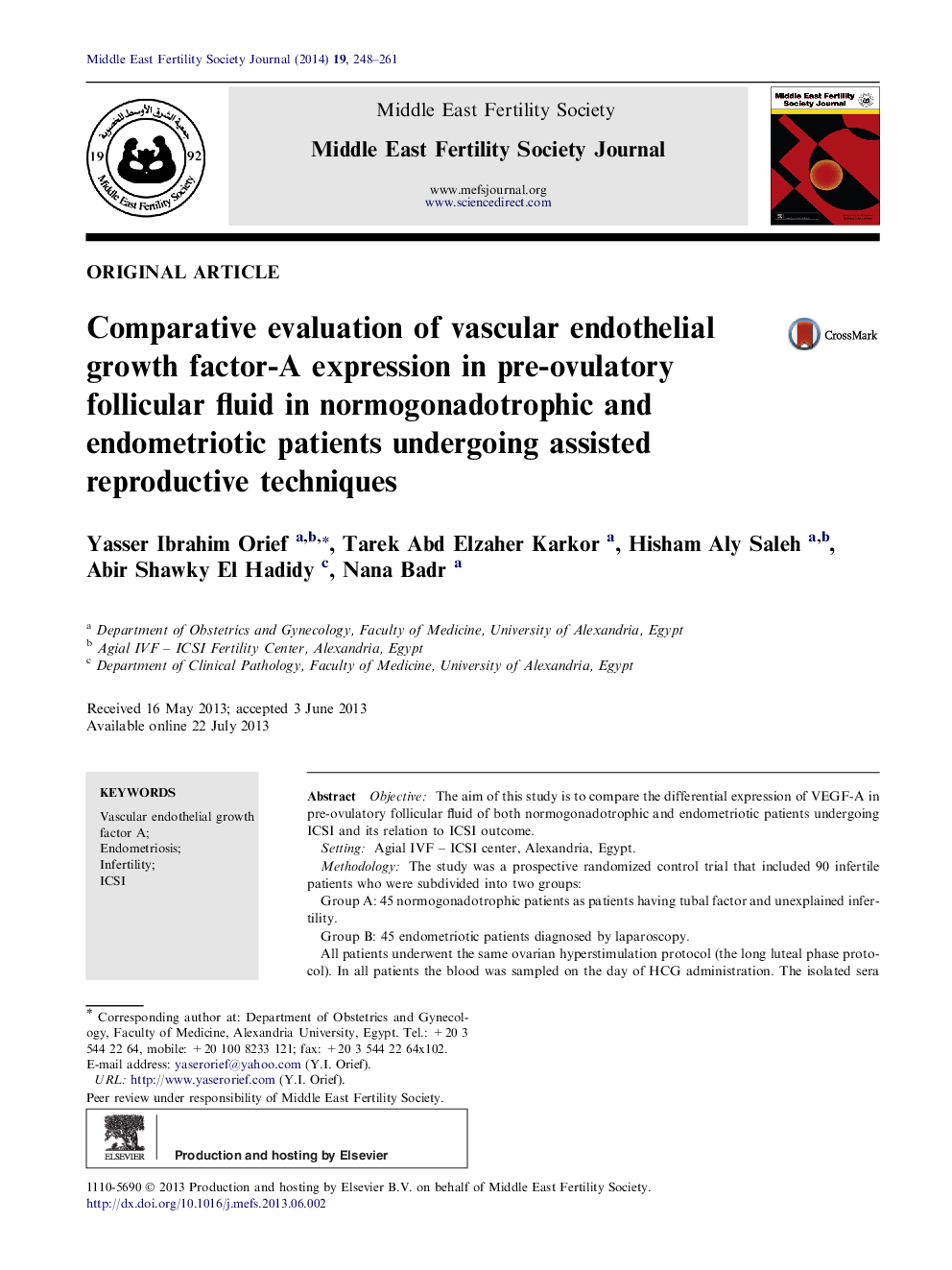| Article ID | Journal | Published Year | Pages | File Type |
|---|---|---|---|---|
| 3966113 | Middle East Fertility Society Journal | 2014 | 14 Pages |
ObjectiveThe aim of this study is to compare the differential expression of VEGF-A in pre-ovulatory follicular fluid of both normogonadotrophic and endometriotic patients undergoing ICSI and its relation to ICSI outcome.SettingAgial IVF – ICSI center, Alexandria, Egypt.MethodologyThe study was a prospective randomized control trial that included 90 infertile patients who were subdivided into two groups:Group A: 45 normogonadotrophic patients as patients having tubal factor and unexplained infertility.Group B: 45 endometriotic patients diagnosed by laparoscopy.All patients underwent the same ovarian hyperstimulation protocol (the long luteal phase protocol). In all patients the blood was sampled on the day of HCG administration. The isolated sera were frozen and stored at −20 °C for later hormone analysis (assay of estradiol and progesterone). The follicular fluid was collected on the day of oocyte retrieval from all the patients. Only aspirates from follicles larger than 17 mm, uncontaminated with blood were included in this study. Follicular fluid samples were centrifuged for 10 min, and the supernatants were stored at −20 °C until hormone measurements were carried out (assay of estradiol, progesterone and androstenedione). VEGF-A assay was performed using the ELISA technique for all the follicular fluid samples and the results were correlated to the ICSI outcome in both groups.Outcome measuresThe primary outcome measures were: (a) The number of mature oocytes per cycle of induction, (b) the grading of embryos obtained, (c) implantation rate, (d) serum level of estradiol and progesterone on the day of HCG administration and (e) follicular fluid level of estradiol, progesterone and androstenedione on the day of oocyte retrieval.The secondary outcome measure was pregnancy rate which was diagnosed by:1. Serum B-hCG assay 14 days after embryo transfer.2. Clinical pregnancy rate.ResultsThere was a statistically significant difference between the two groups when comparing the mean value of the follicular fluid VEGF-A concentrations. In group A, the mean value was 529.4 ± 309.7 (pg/ml), while in group B, it was 1388.7 ± 1152 (pg/ml) (p value = 0.0001). There was no statistical significant difference between both groups as regards the outcome of pregnancy. When correlating between ICSI outcome and different studied parameters a positive correlation was detected between the ICSI outcome and endometrial thickness. No correlation could be detected between the ICSI outcome and other studied parameters. No correlations could be detected between VEGF-A expression and different studied laboratory parameters. However, A positive correlation was detected between VEGF-A and ICSI outcomes in both groups, it means that increasing the level of VEGF-A is accompanied with a decrease in the pregnancy rate (p = 0.003), a negative correlation was detected between VEGF-A and endometrial thickness, a positive correlation was detected between VEGF-A and metaphase I oocytes, otherwise no other correlations could be detected.ConclusionThe current study concluded that follicular fluid VEGF-A is correlated negatively with the ICSI outcome.
